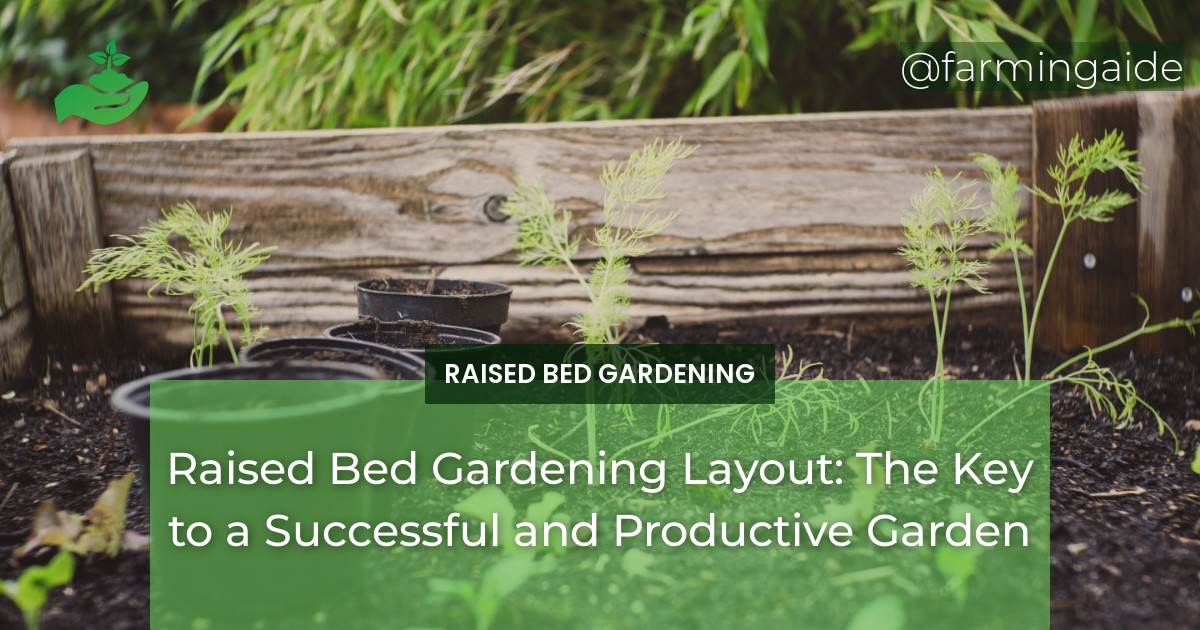A well-planned raised bed garden layout is crucial for a successful and productive garden. Not only does it increase efficiency and productivity, but it also maximizes the use of space and improves the overall aesthetics of the garden. Additionally, a good layout helps with organization and maintenance, making it easier to care for your plants.
In this article, we will discuss the importance of a good raised bed gardening layout and the factors to consider when planning one. We will also explore different layout designs and techniques for maximizing space and productivity in your raised bed garden.
Table of Contents
Importance of a Good Layout
Having a well-designed layout for your raised bed garden is essential for several reasons:
- Increases efficiency and productivity by optimizing the use of space
- Maximizes the use of space, allowing you to grow more plants
- Improves the overall aesthetics of the garden
- Helps with organization and maintenance, making it easier to care for your plants
Factors to Consider When Planning
Location
When planning your raised bed garden layout, the first thing to consider is the location. It is important to choose a spot that receives adequate sunlight, is sheltered from strong winds, and is close to a water source. You should also avoid areas that are prone to flooding or where pets and wildlife may disturb the garden.
Size and Shape
The size and shape of your garden will depend on the available space and your needs. Consider the amount of space you have and the types of plants you want to grow. The shape of the garden is also important for ease of access and aesthetics.
ALSO READ
Soil Quality
Before starting your garden, it is important to test the soil pH and nutrient levels. This will help you determine if any amendments are needed to create a healthy growing environment for your plants.
Raised Bed Materials
When choosing materials for your raised bed, it is important to select ones that are durable and will not leach harmful chemicals into the soil. Consider the cost and accessibility of materials as well.
Different Layout Designs
ALSO READ
Traditional Rows
The traditional row layout is the most common design for raised bed gardens. Plants are arranged in long, straight rows with pathways in between. This layout is suitable for larger gardens and commercial farming.
Square Foot Gardening
In square foot gardening, the garden is divided into equal square sections for efficient use of space. This layout is suitable for small gardens and beginner gardeners.
Companion Planting
In companion planting, plants are grouped together based on complementary characteristics. This promotes healthier plants and natural pest control.
Keyhole Garden
The keyhole garden is a circular garden with a keyhole-shaped pathway for easy access. This layout uses the concept of composting directly in the garden for nutrient-rich soil.
Tips for Maximizing Space and Productivity
Vertical Gardening
Utilizing trellises and other structures to grow plants vertically is a great way to save space and increase yield in your raised bed garden.
Intercropping
Intercropping involves planting different crops together in the same bed. This reduces competition for resources and maximizes the use of space.
Succession Planting
Succession planting is the practice of planting new crops as soon as the previous ones are harvested. This extends the growing season and increases productivity in your garden.
Crop Rotation
Crop rotation involves planting different crops in different areas each season. This helps prevent depletion of nutrients in the soil and reduces pest and disease problems.
Companion Planting
Companion planting involves planting mutually beneficial plants together. This improves soil health and reduces pest and disease problems in your garden.
Conclusion
A well-planned raised bed garden layout is essential for a successful and productive garden. When planning your layout, consider the location, size and shape, soil quality, and materials. There are various layout designs and techniques that can be used to maximize space and increase productivity in your raised bed garden. By following these tips, you can create a beautiful and bountiful garden that will provide you with fresh produce all season long.
RELATED ARTICLES:


